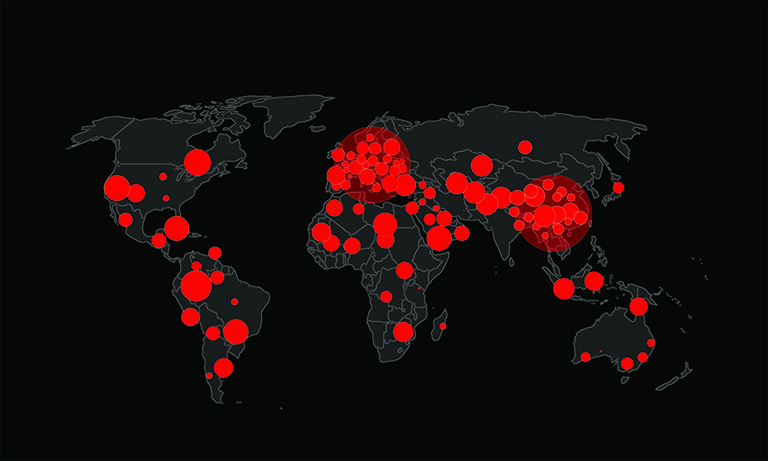SparrowDoor Backdoor: A Cyber Threat with Advanced Capabilities

Cybersecurity researchers have uncovered a renewed cyber espionage campaign orchestrated by the hacking group FamousSparrow, which has been linked to a recent attack targeting a U.S. trade organization and a Mexican research institute. At the heart of this operation is the SparrowDoor backdoor, an advanced tool designed to infiltrate and persist within targeted systems, facilitating covert data theft and unauthorized access.
Table of Contents
What Is SparrowDoor Backdoor?
SparrowDoor is a backdoor implant, first identified in 2021, that has been exclusively associated with the FamousSparrow group. This tool enables attackers to execute commands, manipulate files, gather intelligence, and even uninstall itself when necessary to evade detection. Recently, two new versions of SparrowDoor have been identified, showcasing significant enhancements in efficiency and modularity.
One of these versions has been developed modularly, integrating a plugin-based architecture that extends its functionality. These modules allow attackers to log keystrokes, execute remote commands, launch proxy services, capture screenshots, and monitor file system changes. This design grants the operators precise control over compromised systems and increases the backdoor’s versatility.
How Does SparrowDoor Operate?
The attack begins with the deployment of a web shell on an Internet Information Services (IIS) server, which acts as a gateway for delivering malicious payloads. The exact method of gaining initial access remains unclear. Still, it is believed that outdated software, such as older versions of Windows Server and Microsoft Exchange Server, played a role in facilitating the breach.
Once inside, the attackers execute a batch script that deploys an embedded .NET-based web shell. This secondary web shell then installs SparrowDoor, establishing a persistent foothold within the compromised network. One of the backdoor’s key enhancements is its ability to execute long-running commands without disrupting communication with the command-and-control (C&C) server. This means that the backdoor can process new instructions while simultaneously carrying out time-intensive operations, such as file transfers or shell interactions.
What Are Its Capabilities?
SparrowDoor offers an extensive set of commands that allow attackers to:
- Launch interactive shell sessions for real-time control.
- Transfer files between the victim machine and the C&C server.
- Log keystrokes to capture sensitive information.
- Set up a TCP proxy to route malicious traffic.
- Monitor changes in specified directories.
- Capture screenshots to visually track user activity.
- Enumerate and terminate running processes.
These features make SparrowDoor an effective tool for long-term cyber espionage, data exfiltration, and persistent network infiltration.
The Link to Other Cyber Threats
While FamousSparrow has been linked to other known threat groups, including Earth Estries, GhostEmperor, and Salt Typhoon, cybersecurity analysts continue to treat it as a distinct entity. This is due to its unique attack methodologies and the exclusive use of SparrowDoor.
The group’s latest campaign also marks the first documented instance of it deploying ShadowPad, another highly sophisticated malware previously associated with Chinese state-sponsored actors. This suggests that FamousSparrow may be sharing tools or aligning its operations with other advanced persistent threats (APTs), further complicating attribution efforts.
Implications of the Attack
The emergence of an enhanced SparrowDoor backdoor has serious implications for global cybersecurity. Organizations running outdated or unpatched systems are particularly vulnerable to this threat, as the attack methods rely on exploiting known weaknesses in enterprise infrastructure.
SparrowDoor's ability to maintain persistence and execute parallel tasks makes it a formidable tool for cyber espionage. This raises concerns about the potential for intellectual property theft and surveillance and the broader risks posed to critical industries. Research institutes, government agencies, and private sector organizations handling sensitive data must remain vigilant against such threats.
Defensive Measures
To mitigate the risk posed by SparrowDoor and similar cyber threats, organizations should take proactive steps, including:
- Regular Patching: Ensuring that all software, especially Windows Server and Microsoft Exchange, is updated to the latest security versions.
- Network Monitoring: Implementing advanced threat detection systems to identify unusual traffic patterns and unauthorized access attempts.
- Endpoint Security: Deploying strong endpoint protection solutions that can detect and neutralize advanced malware.
- Access Control: Restricting administrative privileges to minimize the attack surface.
- Incident Response Planning: Preparing contingency plans to respond swiftly to cyber incidents and minimize potential damage.
Final Thoughts
The discovery of the latest SparrowDoor variants signals that FamousSparrow remains an active and evolving cyber threat. With its sophisticated capabilities, modular architecture, and potential links to other APT groups, the backdoor poses a significant risk to organizations worldwide. Because cyber threats do not stop evolving, businesses and institutions must adopt strong cybersecurity measures to defend against such persistent and adaptable adversaries.







